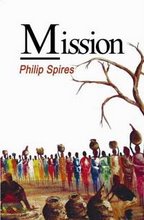In human affairs, enthusiasm is often associated with youth, whereas competence that approaches perfection is usually only possible in maturity. Occasionally - just occasionally - the two qualities are combined in a single and therefore memorable event. Here, it was the music making of the Valencia Youth Orchestra. It married enthusiasm and perfection in a musical evening that all involved, musicians and audience alike, will never forget.
The Valencia Youth Orchestra can recruit players up to their mid-twenties, so here we are talking about musicians who are on the verge of their careers. In this concert, they were directed by their current guest conductor, Edmon Levon, who also introduced each piece to the audience.
The performers began with a piece by Samuel Coleridge-Taylor, an English composer, less well known in Spain than in the United Kingdom, where he is undergoing a revival that is reviving his music from an anonymity achieved by a hundred years of neglect. Despite playing for a US president and having packed out the Royal Albert Hall for years on end with his Hiawatha, his music must now be re-discovered. A movement from his African Suite had more than enough to spark interest in his always melodic music.
Enrique González Gomá, whose Ofrenda a Colombina followed, is a little-known composer even in his native Spain. He was a Valencian by birth, from Tavernes, born in 1899 and living until 1977. After the bravura and frenzy of an African dance, González Gomá’s piece offered a significant contrast. Quiet and reflective, even impressionistic, this music explores textures to evoke feelings. The effect was both magical and surprising.
In comparison to what proceeded it, Rossini’s Bassoon Concerto is quite a well-known work, though in over 50 years of concert going, I was hearing for the first time in performance. Ignacio Soler as soloist was both faultless in execution and as enthusiastic about the music as the orchestra he fronted. Rossini’s treatment of the form was distinctly operatic, with the bassoon often sounding like a singer delivering an opera aria in Rossini’s distinctly bravura, if sometimes rather predictable style. The quality of invention in his music, however, is undeniable, even if at times one feels as though one may have heard it before somewhere else!
The enthusiasm of the audience reaction prompted Ignacio Soler to present an encore, for which he was joined by two of the bassoons from the orchestra to play the Tango by Martinez. In this piece, a perhaps cliché tune is passed skilfully between the three players. The sonority of the bassoon trio is utterly surprising, and the ensemble suggests improvisation, even in its absence.
In the second half, the Valencia Youth Orchestra played one of the symphonies that define music. Tchaikovsky Pathetique, Symphony No. 6, is not just a staple of the orchestral repertoire, it is one of its mainstays. This is a work that not only never disappoints, but it also actually grows with repeated hearings.
It is music that, I believe, is ruined by applause between movements. The transition, especially from movements three to four, is crucial to the work’s emotional argument and all tension associated with being “right up there” one moment and “right down there” in the next is dissipated by audience intervention. Edmon Levon, I suspect, agrees with this, and when the audience applauded after the first movement, he half turned to acknowledge but in a single gesture managed to communicate that the end of the work would be more appropriate.
Tchaikovsky 6 is a mammoth work that demands real musical maturity alongside perfection of ensemble. There were one or two rhythmic stutters in the fast third movement, but nothing to detract from the experience. Personally, I found the horns of the opening of the fourth too loud, but I am splitting hairs.
The audience reaction to this great music was nothing
less than ecstatic. Thus, we were treated to an encore. What to play after a
work like Tchaikovsky 6 is a problem. Edmon Levon contrasted Tchaikovsky’s
emotional paroxysms with Ravel’s detachment. We heard the final section of the Mother
Goose suite, and its largely modal harmonies were quite
surprising after the symphony’s outbursts. We had a real Valencia bash to
finish, a piece that the orchestra played largely undirected, with Edmon Levon
taking a seat in the stalls. At the end, the whole orchestra stood, still
playing. The audience followed suit, applauding.






